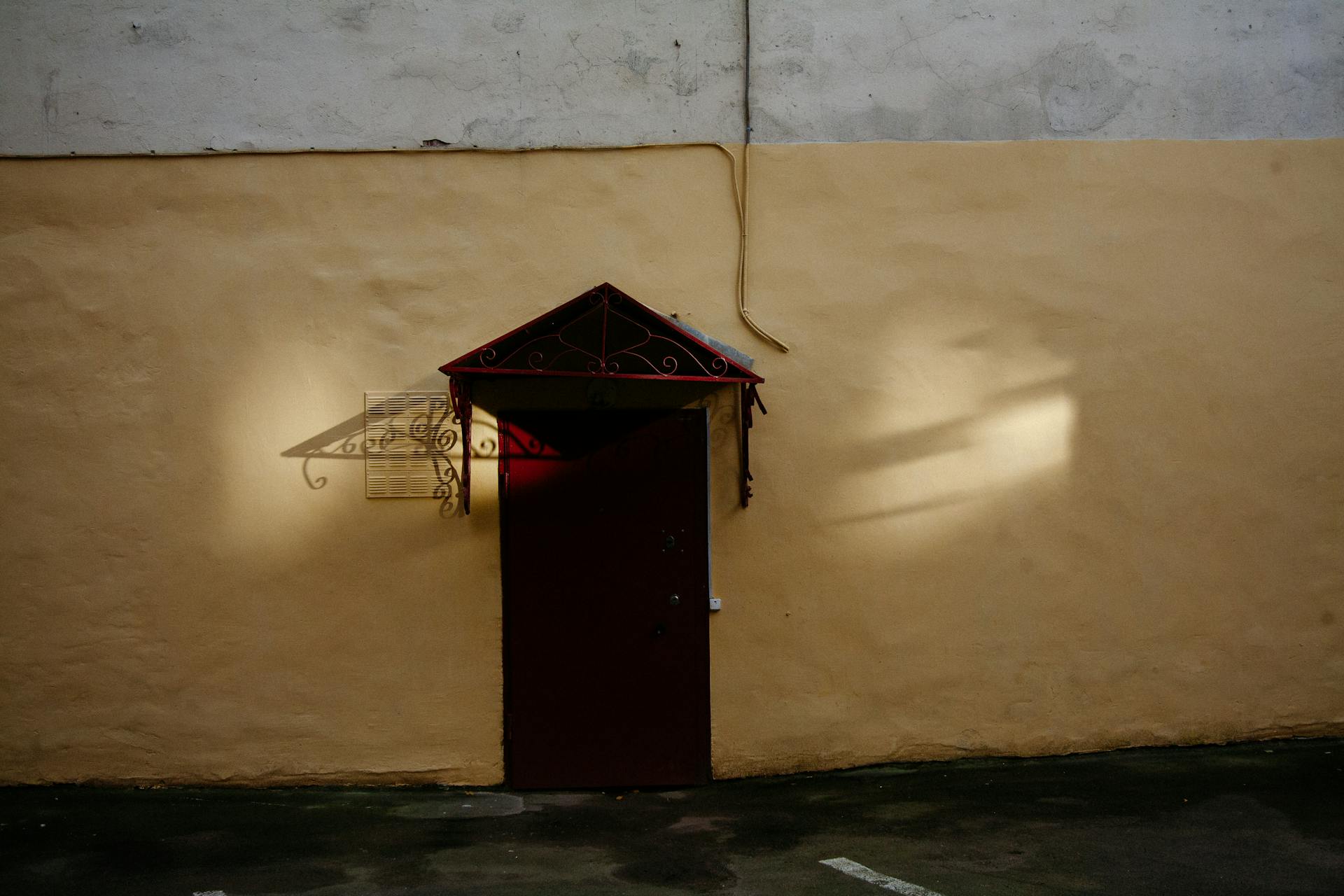
There are a few telltale signs that your house may have asbestos. If your home was built before the 1980s, it is more likely to contain asbestos. Asbestos was commonly used in insulation, flooring, shingles, and other building materials before it was banned in the United States. If you see any of the following signs in your home, it is possible that you have asbestos:
If you see any suspicious looking materials in your home, it is important not to touch them. Asbestos fibers can be released into the air when disturbed, and inhaling these fibers can be dangerous to your health. If you think you may have asbestos in your home, it is important to have it tested by a professional. A certified asbestos inspector can take samples of the suspicious materials and have them analyzed by a laboratory. If the laboratory confirms that asbestos is present, the next step is to have the asbestos removed by a certified asbestos abatement contractor.
How old is your house? If your house was built before the 1980s, it may contain asbestos.
If your house was built before the 1980s, it may contain asbestos. Asbestos is a naturally occurring fibrous mineral that was used extensively in building construction and other products prior to the 1980s due to its resistance to heat, chemical damage, and electricity. Unfortunately, asbestos is also a human carcinogen, and exposure to asbestos fibers can lead to a variety of serious health problems, including mesothelioma, lung cancer, and asbestosis.
If you live in an older home, there are a few things you can do to determine if it contains asbestos. First, check any exposed piping or insulation in your basement or crawlspace. If the material is flakey or crumbly, it may be asbestos. You can also have a professional inspection done by a certified asbestos abatement contractor.
If asbestos is found in your home, the best course of action is to have it removed by a certified professional. Asbestos removal is a complex and dangerous process, so it is not something you should attempt on your own. Once removed, be sure to have your home tested regularly for asbestos to ensure that no fibers have been left behind.
What type of insulation does your house have? Asbestos was commonly used in insulation, so if your house has old insulation, it may contain asbestos.
If you're not sure what type of insulation is in your home, it's possible that it contains asbestos. Asbestos was commonly used in insulation and other construction materials before 1980, when its use was restricted due to health concerns. Even though asbestos is no longer used in insulation, homes built before 1980 may still have it. If you're concerned that your home might have asbestos insulation, you can have it tested by a qualified professional. Asbestos fibers can be released into the air if the insulation is disturbed, so it's important to have it tested and removed by a qualified contractor if it does contain asbestos.
What type of flooring does your house have? Asbestos was commonly used in flooring, so if your house has old flooring, it may contain asbestos.
Flooring is one of the foundation elements of any house. It needs to be strong and durable in order to support the weight of furniture and foot traffic. There are many different types of flooring available on the market, each with their own benefits and drawbacks. Asbestos is a type of flooring that was once commonly used but is now known to be dangerous. If your house has old flooring, it may contain asbestos.
Asbestos is a naturally occurring mineral that is made up of long, thin fibers. It is these fibers that make asbestos so dangerous. When asbestos fibers are inhaled, they can lodge themselves in the lungs and cause serious health problems. Asbestos exposure has been linked to lung cancer, mesothelioma, and other serious respiratory diseases.
If you suspect that your house may have asbestos in the flooring, it is important to have it tested by a professional. If asbestos is found, it is best to have the flooring removed by a trained and certified asbestos abatement company. Asbestos removal is a complex and dangerous process, so it is not something that should be attempted by amateurs.
While asbestos flooring can be dangerous, there are many other types of flooring that are safe and effective. Vinyl flooring is a popular choice for many homeowners because it is affordable and easy to install. Vinyl flooring is also easy to clean and maintain. Laminate flooring is another popular choice. Laminate flooring looks like real wood but is actually made from a composite material. Laminate flooring is also easy to install and maintain.
If you are unsure about what type of flooring is right for your home, it is best to consult with a professional. Flooring experts can help you choose the right type of flooring for your needs and budget. They can also advise you on the best way to install and maintain your new flooring.
What type of siding does your house have? Asbestos was commonly used in siding, so if your house has old siding, it may contain asbestos.
If you're like most people, you don't think much about the siding on your house. But the material your house is sided with can make a big difference in its appearance, durability, and energy efficiency. Asbestos was a common material used in siding, so if your house has old siding, there's a chance it contains asbestos.
Asbestos is a naturally occurring mineral that is resistant to heat, fire, and chemicals. These properties made it ideal for use in a variety of products, including siding. Unfortunately, we now know that asbestos exposure can lead to serious health problems, including lung cancer.
If you're concerned that your house may have asbestos siding, there are a few things you can do. First, you can have your house tested for asbestos. If asbestos is found, you'll need to have it removed by a qualified professional. This can be a costly and time-consuming process, but it's the only way to protect your family from the health hazards of asbestos.
What type of roofing does your house have? Asbestos was commonly used in roofing, so if your house has an old roof, it may contain asbestos.
Asbestos is a group of minerals that occur naturally in the environment. These minerals are made up of tiny fibers that can be easily inhaled and cause serious health problems, including cancer. Asbestos was commonly used in roofing materials, so if your house has an old roof, it may contain asbestos.
There are several different types of asbestos, but the most common type found in roofing materials is chrysotile. Chrysotile asbestos is white and has been the most widely used type of asbestos. It is still used today in some countries, although its use is restricted in many developed countries, including the United States.
Amosite asbestos is another type of asbestos that was commonly used in roofing materials. It is brown or gray in color and has a fibers that are less flexible than chrysotile asbestos. As a result, amosite asbestos is more likely to break and release fibers that can be inhaled. Amosite asbestos is no longer used in roofing materials in the United States.
Crocidolite asbestos is the most dangerous type of asbestos. It is blue in color and has sharp, needle-like fibers that can penetrate the skin. Crocidolite asbestos is no longer used in any type of building material in the United States.
If you think your house may have asbestos in the roofing materials, it is important to have it tested by a qualified professional. Asbestos testing is the only way to confirm the presence of asbestos. Once asbestos is confirmed, there are a number of options for dealing with it, including removal and encapsulation.
If you have asbestos in your roof, it is important to have it removed by a qualified asbestos removal company. Asbestos removal is a complex and dangerous process that should only be performed by trained and experienced professionals. Once asbestos is removed from your house, it will need to be properly disposed of at an approved landfill.
If you decide not to have the asbestos removed from your house, you can choose to have it encapsulated. Asbestos encapsulation involves sealing the asbestos-containing material with a coating that will prevent fibers from being released into the air. Asbestos encapsulation is not a permanent solution, but it can significantly reduce the risk of exposure to asbestos fibers.
no matter what option you choose for dealing with asbestos in your roof, it is important to have the work done by a qualified professional. Asbestos is a serious health
What type of pipes does your house have? Asbestos was commonly used in pipes, so if your house has old pipes, it
If you're like most people, you probably don't think much about the pipes in your house. But if you're considering purchasing an older home, or if you're concerned about possible exposure to asbestos, it's important to know what types of pipes are in your house and whether they may contain asbestos.
Asbestos was commonly used in pipes, so if your house has old pipes, there's a good chance they contain asbestos. Asbestos is a mineral that was once widely used in a variety of building materials because of its resistance to heat and corrosive chemicals. However, we now know that exposure to asbestos can cause serious health problems, including lung cancer.
If you're concerned about asbestos in your pipes, the best thing to do is to have them inspected by a professional. They can test the pipes to see if they contain asbestos and, if necessary, recommend a course of action for dealing with the asbestos.
In most cases, simply leaving the asbestos-containing pipes alone is the best option. As long as they're in good condition and not leaking, they pose very little risk. However, if the pipes are damaged or deteriorating, it may be necessary to repair or replace them.
If you do need to repair or replace asbestos-containing pipes, it's important to do so safely. You should never try to remove asbestos yourself; it's a job for trained professionals. Once the asbestos is removed, you can then install new, safe pipes.
So, if you're concerned about asbestos in your house, the best thing to do is to have the pipes inspected by a professional. They can test for asbestos and, if necessary, recommend a safe course of action for dealing with it.
Frequently Asked Questions
Do older homes still contain asbestos?
Yes, many older homes still contain asbestos. Asbestos exposure in your home can occur in different ways: DIY renovation, drilling through drywall or replacing an old pipe. The following scenarios describe how homeowners can expose themselves to asbestos at home.
Should asbestos insulation around pipes be cut?
It is not uncommon to find asbestos insulation around pipes in older homes. If the insulation is starting to deteriorate, it may be best to cut it off and dispose of the fibers safely. Cutting the insulation could disperse asbestos fibers into the air, soensation nearby workers, or your home's interior if the insulation falls on flooring.
What kind of pipes are used in old houses?
Galvanized steel, copper, and cast iron are the most common types of pipes used in older houses.
What should Brent know about asbestos in plumbing?
Asbestos-containing materials were common in older plumbing systems. When these systems are cut or damaged, asbestos fibers can be released into the air. These fibers may be a health risk if you are exposed to them. If you are concerned that your home may contain asbestos, you should have an asbestos professional evaluate the situation.
Is there still asbestos in houses built before the EPA?
Asbestos was banned in the United States in 1979, but some materials that contain asbestos may still be present in older homes. The EPA has published reports about the dangers of asbestos and warns Americans against living in homes with exposed asbestos. If you live in a house built before the EPA issued these warnings, you may want to have your home evaluated to determine whether it contains any asbestos. If there is asbestos present, a professional will need to remove it safely.
Sources
- https://www.bobvila.com/slideshow/7-ways-to-trace-your-home-s-history-48193
- https://www.angi.com/articles/how-can-i-tell-if-house-has-asbestos.htm
- https://homesbyardor.com/when-was-my-house-built-how-old-is-it/
- https://www.realhomes.com/advice/how-old-is-your-property
- https://www.wikihow.com/Recognize-Asbestos
- https://www.healthworkscollective.com/signs-you-may-have-asbestos-in-your-house/
- https://www.asbestos.nsw.gov.au/identify-asbestos/how-do-i-know-if-its-asbestos
- https://www.webmd.com/connect-to-care/vaping/how-to-know-home-asbestos-exposure
- https://www.restorationservicesil.com/how-to-tell-home-asbestos/
- https://www.dreamlandsdesign.com/how-to-detect-asbestos-signs-house-has-asbestos-problem/
- https://cpdonline.co.uk/knowledge-base/health-and-safety/how-to-identify-asbestos/
- https://www.thespruce.com/how-old-is-your-house-176049
- https://cleanfirst.ca/6-easy-ways-to-identify-asbestos-in-your-home-without-a-specialist/
- https://www.archinghouse.com/if-your-home-was-built-before-the-1980s-schedule-asbestos-testing-and-removal-today/
- https://www.adelphiaexteriors.com/how-to-tell-if-your-house-has-asbestos-siding/
Featured Images: pexels.com


